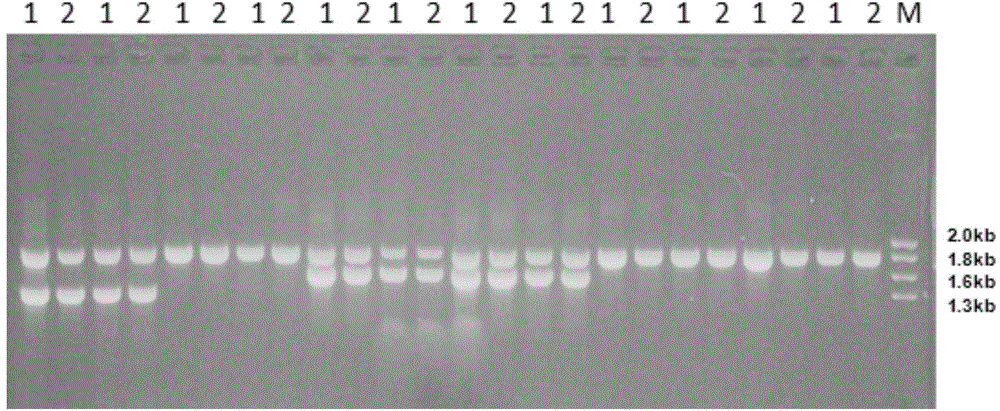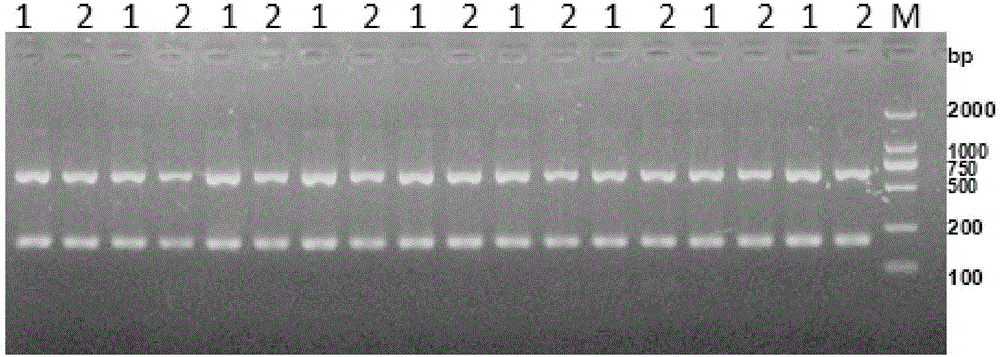Sample conditioning fluid based on denaturation precipitation as well as application thereof and nucleic acid releasing method
A technology for sample treatment solution and nucleic acid release, which is applied in biochemical equipment and methods, and the determination/inspection of microorganisms. , the effect of reducing pollution sources
- Summary
- Abstract
- Description
- Claims
- Application Information
AI Technical Summary
Problems solved by technology
Method used
Image
Examples
Embodiment 1
[0034] Embodiment 1 Technical principle of the present invention
[0035] Polyethylene glycol can induce the aggregation of macromolecules in the aqueous solution. Under the action of polyethylene glycol, it can increase the hydrophilicity of the solution and increase the OH-ion concentration of the solution. The strong alkaline environment provided is helpful for rapid cell lysis It also destroys the structure of the nucleoprotein, and when it is added to the PCR reaction solution, its pH value will drop to a normal level without inhibiting amplification.
[0036] High salt solution is beneficial to the precipitation of nucleoprotein in the cell. The solid-phase chelating resin can integrate multivalent metal ions, especially divalent ions. It has higher metal ion selectivity and stronger binding than ordinary ion exchangers. It can combine many other exogenous substances (such as ferrous ions) that may affect one-step analysis, and remove the solid particle resin and impurities b...
Embodiment 2
[0043] The sample treatment solution of the present invention is composed of (the mass percentage of the sample treatment solution) 1-15% PEG400, 10-40mmol / L potassium hydroxide (KOH), 0.1-2% surfactant (Teween-20, TritonX-100 ), 1-20% solid phase resin chelex-100, 3-20% PCR enhancer (glycerin, DMSO) and 100-400mmol / L KCL.
[0044] Configuration method: use sterile water, add 1-15% PEG400 and 10-40mmol / L potassium hydroxide (KOH), add 0.1-2% surfactant (Teween-20, TritonX-100) and 100-400mmol / L KCL, then add 3-20% PCR synergist (glycerin, DMSO), and finally add 1-20% solid phase resin chelex-100 to mix well to get the sample treatment solution.
[0045] The configured sample treatment solution and the blood sample are added and mixed in a certain ratio. The blood sample is preferably added in a ratio of 20 μL to the 20-500 μL of the lysate, and vortexed to mix. More preferably, 20 μL of the blood sample is added to 50 -150μL of lysis buffer, vortex and mix well, add 10% of the PCR...
Embodiment 3
[0048] A preferred sample treatment solution of the present invention consists of the following components (accounting for the mass percentage of the sample treatment solution): 3% PEG400, 0.5-1.2% surfactant, 5-15% solid phase resin chelex-100, 5- 8% PCR enhancer, 150-300mmol / LKCL and 20mmol / LKOH. The sample processing solution solvent is sterile water.
[0049] Use of the above-mentioned sample treatment liquid of the present invention:
[0050] 1. Take out the sample treatment solution (the reagent is a suspension, shake well before use to suspend the particles), add 300μL of the sample treatment solution to a 1.5mL centrifuge tube, and pipette should be used from time to time during the process of aspirating the treatment solution The liquid device is blown to make the particles evenly suspended.
[0051] 2. Add 20.0ul of anticoagulant blood to the sample processing solution, vortex for 25sec, and centrifuge briefly to avoid residual droplets on the inner wall of the tube.
[00...
PUM
 Login to View More
Login to View More Abstract
Description
Claims
Application Information
 Login to View More
Login to View More - R&D
- Intellectual Property
- Life Sciences
- Materials
- Tech Scout
- Unparalleled Data Quality
- Higher Quality Content
- 60% Fewer Hallucinations
Browse by: Latest US Patents, China's latest patents, Technical Efficacy Thesaurus, Application Domain, Technology Topic, Popular Technical Reports.
© 2025 PatSnap. All rights reserved.Legal|Privacy policy|Modern Slavery Act Transparency Statement|Sitemap|About US| Contact US: help@patsnap.com


